- »Opålitligt« Stockholm, 2025
- »Mmontessorri« Mexico City, 2022
- »ĉielarka aktivec’« Berlin, 2020
- Group Exhibition »ORTHODOX ABSTRACTION (and of course there was poetry)« Berlin, 2020
- »Nueve años caminando en las laderas« Mexico City, 2018
- »*« Stockholm, 2018
- Group Exhibition »Helen Mirra, Allyson Strafella« Berlin, 2016
- »Helen Mirra« Stockholm, 2015
- Group Exhibition »GATHERED FATES curated by Ignasi Aballí« Berlin, 2015
- Group Exhibition »DRAWN« Berlin, 2014
- Group Exhibition »Umstülpung - curated by Günter Umberg« Berlin, 2012
- »Field Index 3« Stockholm, 2011
- Group Exhibition »Summer Exhibition« Stockholm, 2009
- Group Exhibition »DOG STAR MAN« Berlin, 2009
- »Quarry« Stockholm, 2008
- Group Exhibition »Drawing a Tiger« Berlin, 2007
-
Harsha Menon: A So-called Artist: An Interview with Helen MirraBy Harsha Menon Buddhistdoor Global, 2019
-
Peter Eleey and Helen Mirra: dialogue, april – june 2011, Gehend, Argobooks, 2013
-
Friedrich Meschede: Silvester, Transylvania, Käuzchensteig and more beneath the cloud, Helen Mirra im Grunewald, DAAD, Berlin 2006
-
Rena Leinberger: Interview: Helen Mirra, Bridge, Winter/Spring 2003
-
Jen Bervin: Honest Pen Hospital, Sky-wreck, The Renaissance Society at the University of Chicago, 2002
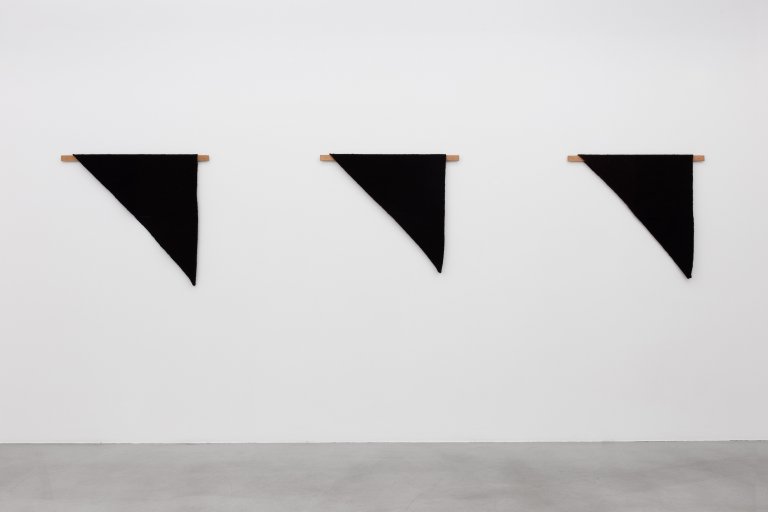
Installation view
Hendl Helen Mirra »Helen Mirra«
Stockholm, August 20, 2015 - September 26, 2015
Since 2010 Helen Mirra has been engaged in an ongoing project in which daylong walks generate artworks and vice versa. These walkings correspond with an overlapping cycle of exhibitions that has perpetuated her ongoing project. While this has largely meant materializing work on foot and out-of-doors, for her current works, each titled Waulked Triangle, Mirra weaves with a continuous strand on a triangle loom, with the hypotenuse set at 180, 215, or 240 cm. In this unusual and primitive method, the standing weaver moves from one edge to the other, alternately forming both the warp and the weft. Although these new pieces do not overtly involve walking (the “waulking” of the titles is a term for the traditional hand-wrought process of finishing a weaving so that the fibers bind together, while conserving the particularities of the weave), that activity remains at the root of all of her work; inasmuch as it is a way of thinking and seeing, it cultivates a somatic relationship with the world.
With a characteristic economy of means, Mirra transforms materials without unmooring them from their origins. For each weaving she uses wool from two black sheep – changing from one to the other halfway through. Three blacks appear - two from the individual sheep, one of their admixture. These blacks can barely be visibly differentiated one from another but for the delimiting colored strand, dyed from foraged mushrooms, drawn through each work. Each triangle is doubled over a cedar support, or folded into an even smaller floor sculpture, and the simultaneity of the part and the whole is further substantiated. Variations within and among the works – in the blacks and the colored strands, and in the irregularities of the triangles – reveal themselves gradually.
Interrupting the weavings, the Walking Commas consist of terse field notes paired with notational black and white photographs which do not document the landscape moved through, but rather dispassionately mark time, and bring to the fore notions of non-redundant repetition, change, and chance, which underlie the cyclic nature of the overall project.
Helen Mirra was born in Rochester, New York in 1970 and lives in Cambridge, Massachusetts. A fifteen year survey (1996-2010) of her work was presented at Culturgest in Lisbon, Portugal in 2014. Recent solo exhibitions include Hourly Directional at Radcliffe Center for Advanced Study and with Ernst Karel at the MIT List Visual Arts Center (both Cambridge MA); and gehend (Field Recordings 1-3), which was held at three venues: Haus Konstruktiv, Zurich, KW Institute for Contemporary Art, Berlin, and Bonner Kunstverein. Other solo institutional exhibitions include The Renaissance Society at the University of Chicago and the Berkeley Art Museum. This year she participated Havana Biennial with a month-long walking project there. She has also participated in the 50th Venice Biennial (2003) and the 30th Sao Paulo Biennial (2012). Recent publications are the book gehend (argobooks, 2013), the three-ring binder Edge Habitat Materials (Whitewalls, 2014), the CD Maps of Parallels 41 N and 49 N with Ernst Karel (Shhpuma, 2014), and the LP Kwangsi-Quail with Fred Frith (Shhpuma, 2015). Mirra has been awarded various fellowships and residencies, including the DAAD in Berlin, OCA in Oslo, and IASPIS in Stockholm.
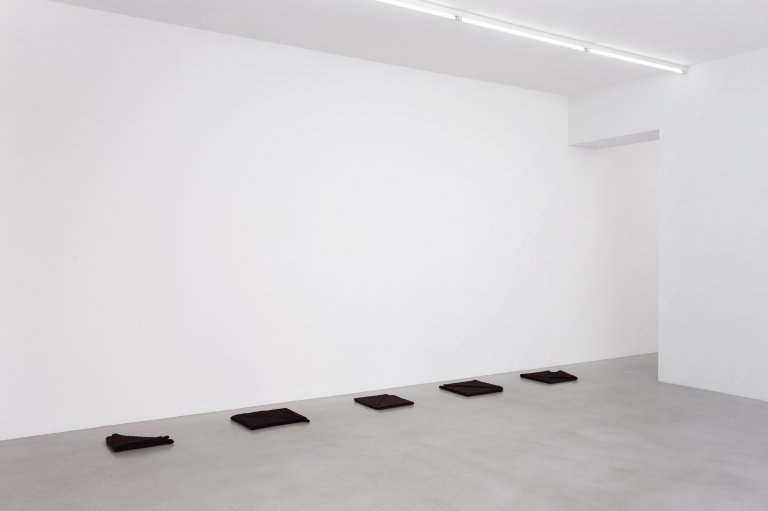
Installation view
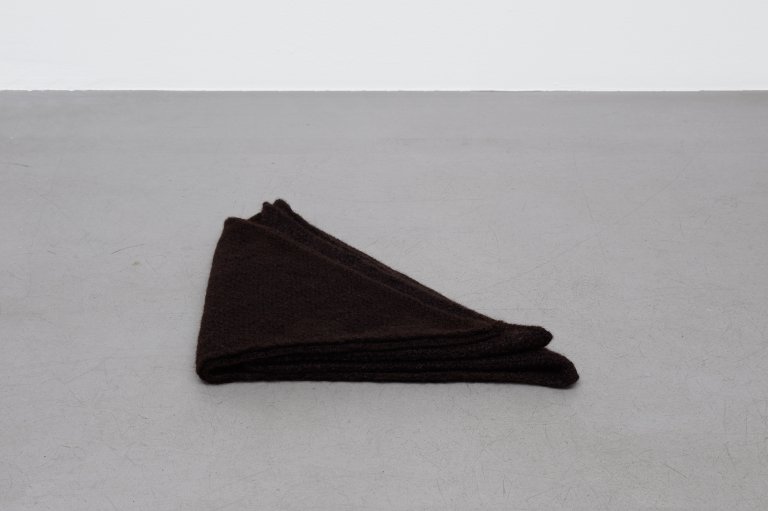
Folded waulked triangle, 2015, undyed wool from two black sheep, strand of wool dyed with phaeolus schweinitzii, 36 x 41 x 4 cm
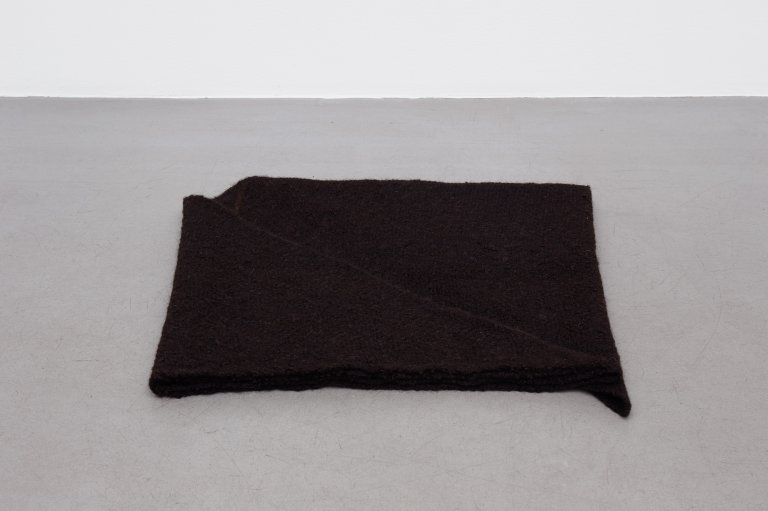
Folded waulked triangle, 2015, undyed wool from two black sheep, strand of wool dyed with boletopsis sp., 46 x 50 x 4 cm
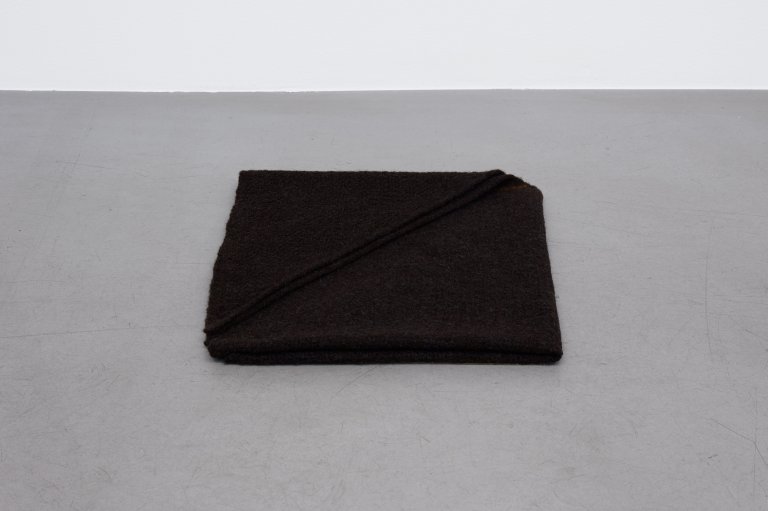
Folded waulked triangle, 2015, undyed wool from two black sheep, strand of wool dyed with inotus hispidus, 40 x 42 x 3 cm
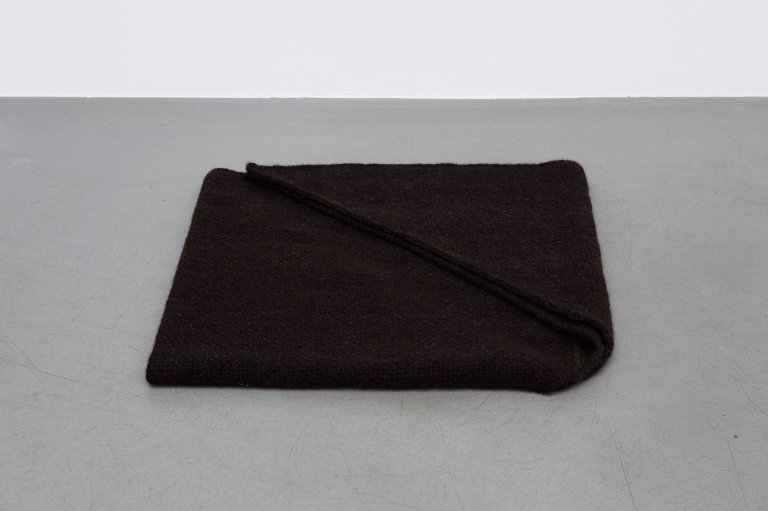
Folded waulked triangle, 2015, undyed wool from two black sheep, strand of wool dyed with boletopsis sp., 46 x 50 x 4 cm
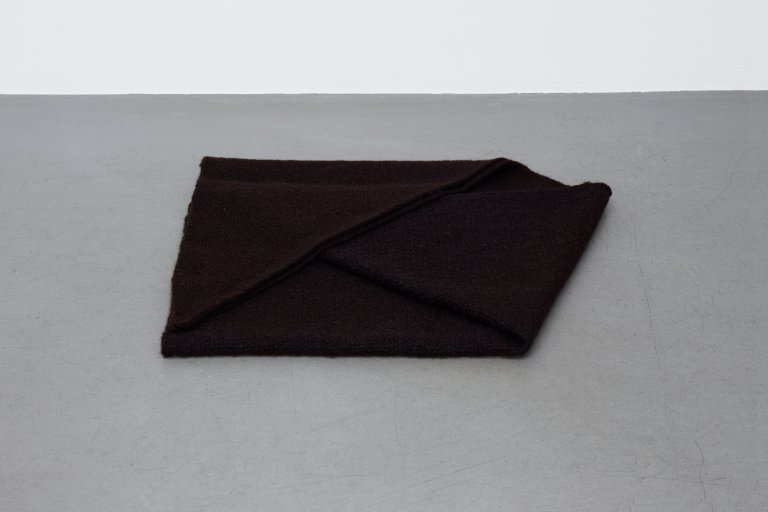
Folded waulked triangle, 2015, undyed wool from two black sheep, strand of wool dyed with cortinarius semisanguineus, 46 x 56 x 4 cm
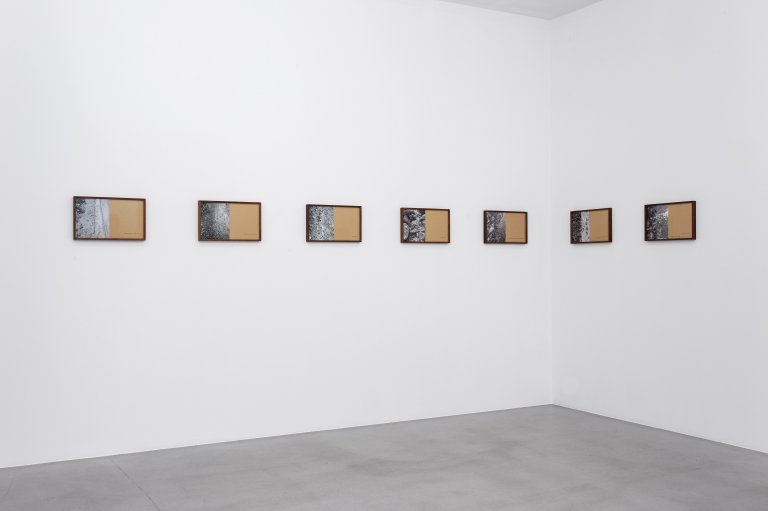
Walking commas, 27 June, Cape Breton, 2014, black and white photographs and text in seven framed parts, 7 parts, each 28 x 43 cm
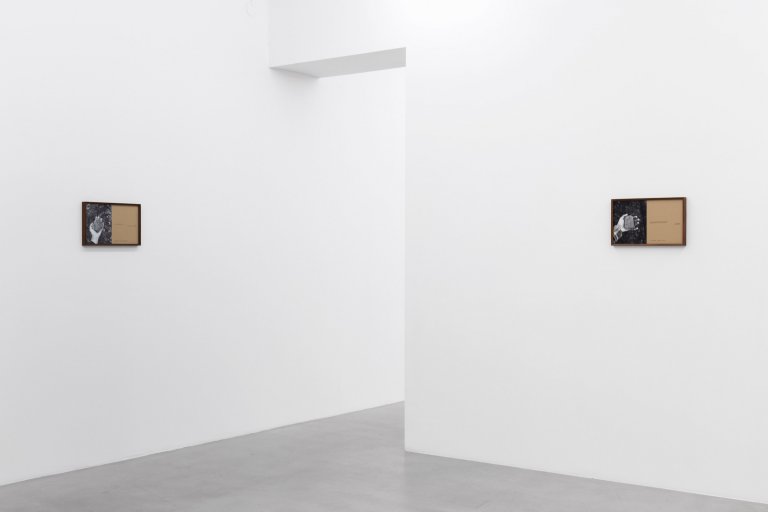
Installation view
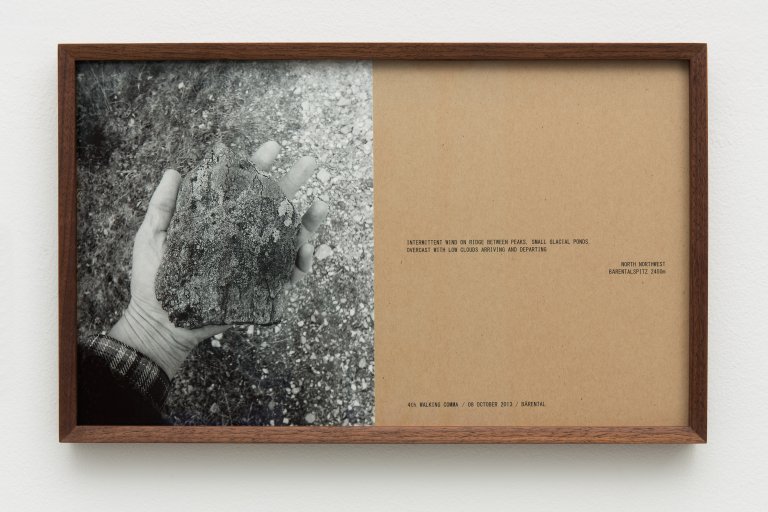
Walking comma, 08 October, Bärental, 2013, black and white photograph and text, framed, 28 x 43 cm
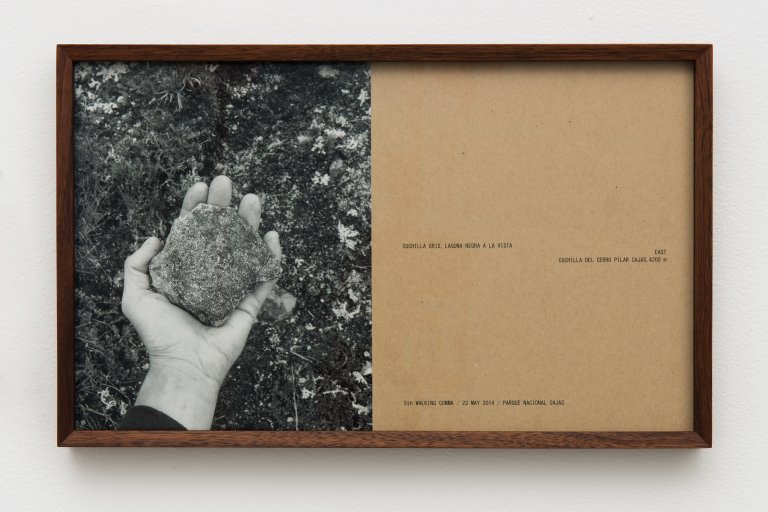
Walking comma, 23 May, Ecuador, 2014, black and white photograph and text, framed, 28 x 43 cm
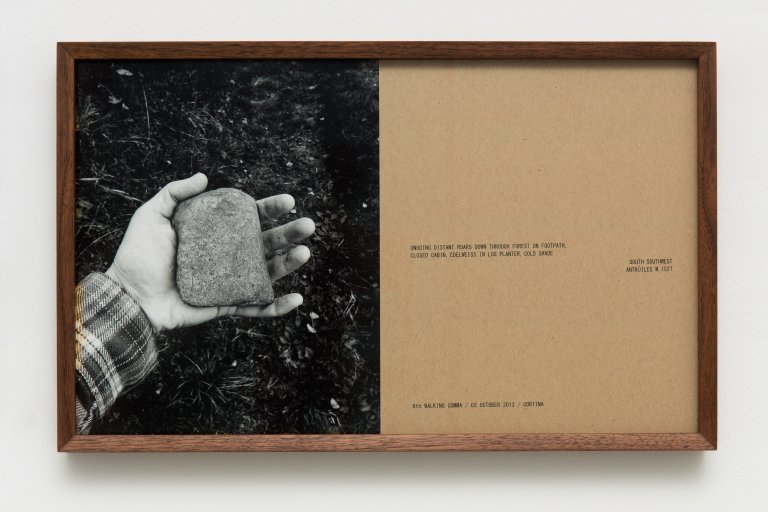
Walking comma, 02 October, Cortina, 2013, black and white photograph and text, framed, 28 x 43 cm
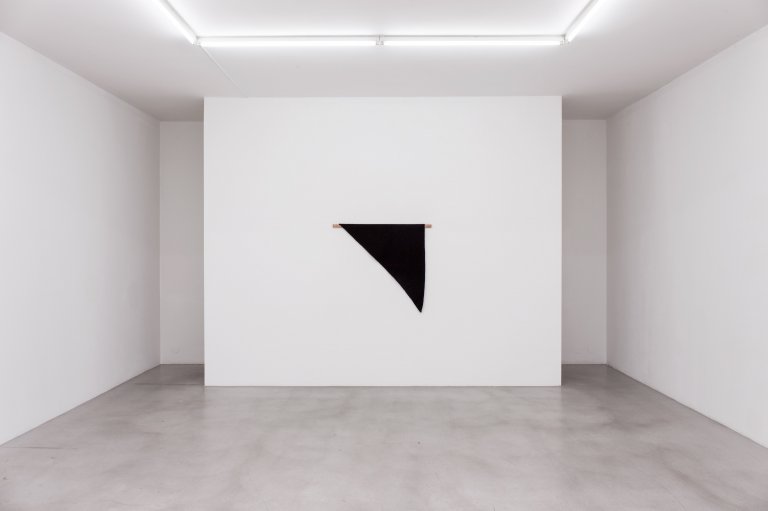
Waulked Triangle, 2015, undyed wool from two black sheep, strand of wool dyed with cortinarius semisanguineus, cork, cedar, 100 x 111 cm
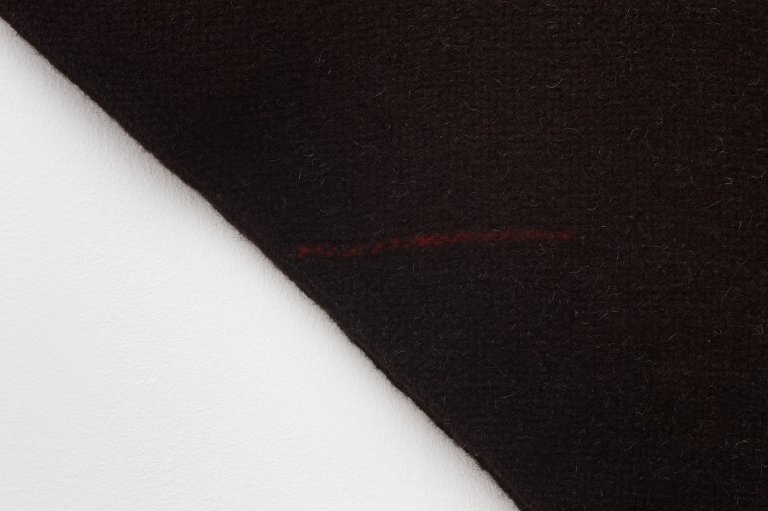
Waulked Triangle, 2015, detail
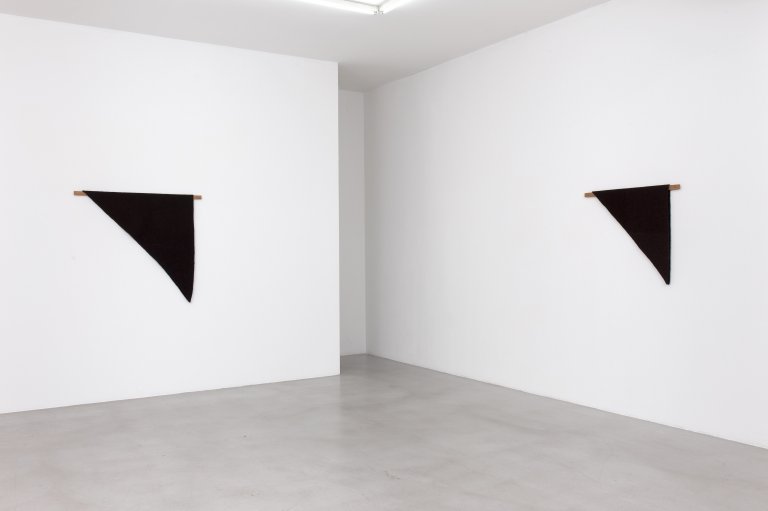
Installation view

Installation view
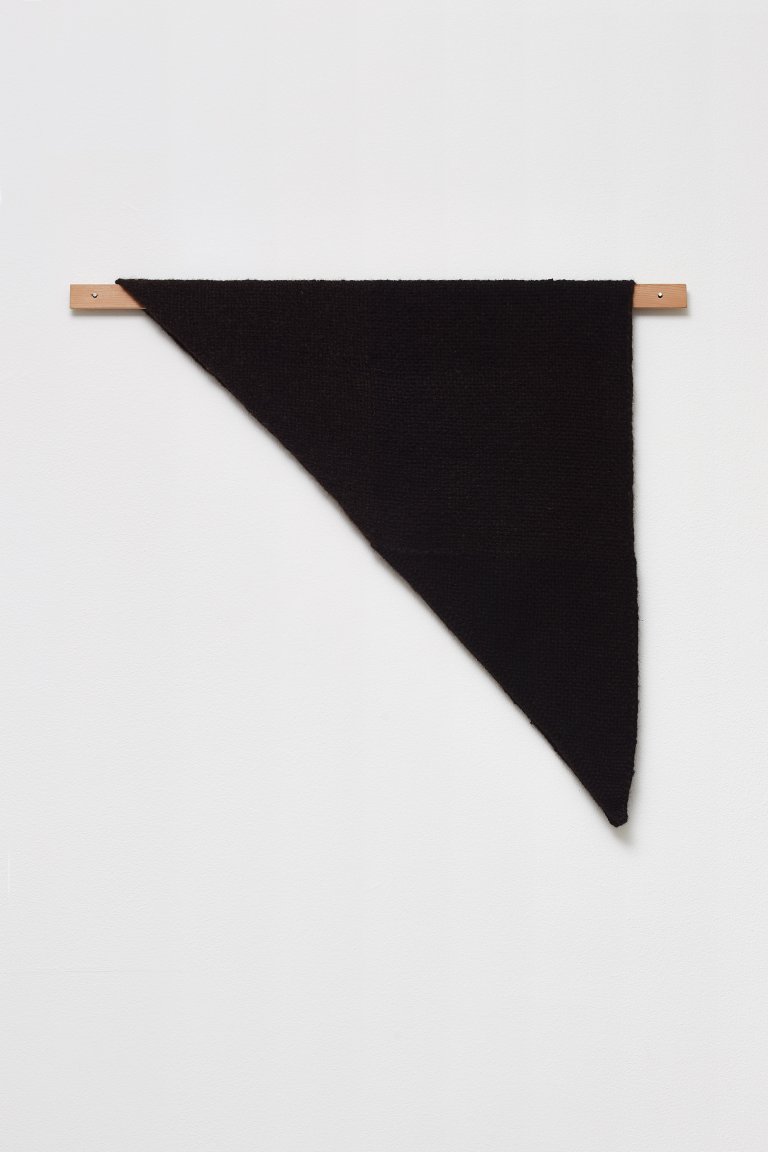
Waulked Triangle, 2015, undyed wool from two black sheep, strand of wool dyed with hydnellum caeruleum, cork, cedar, 77 x 87 cm
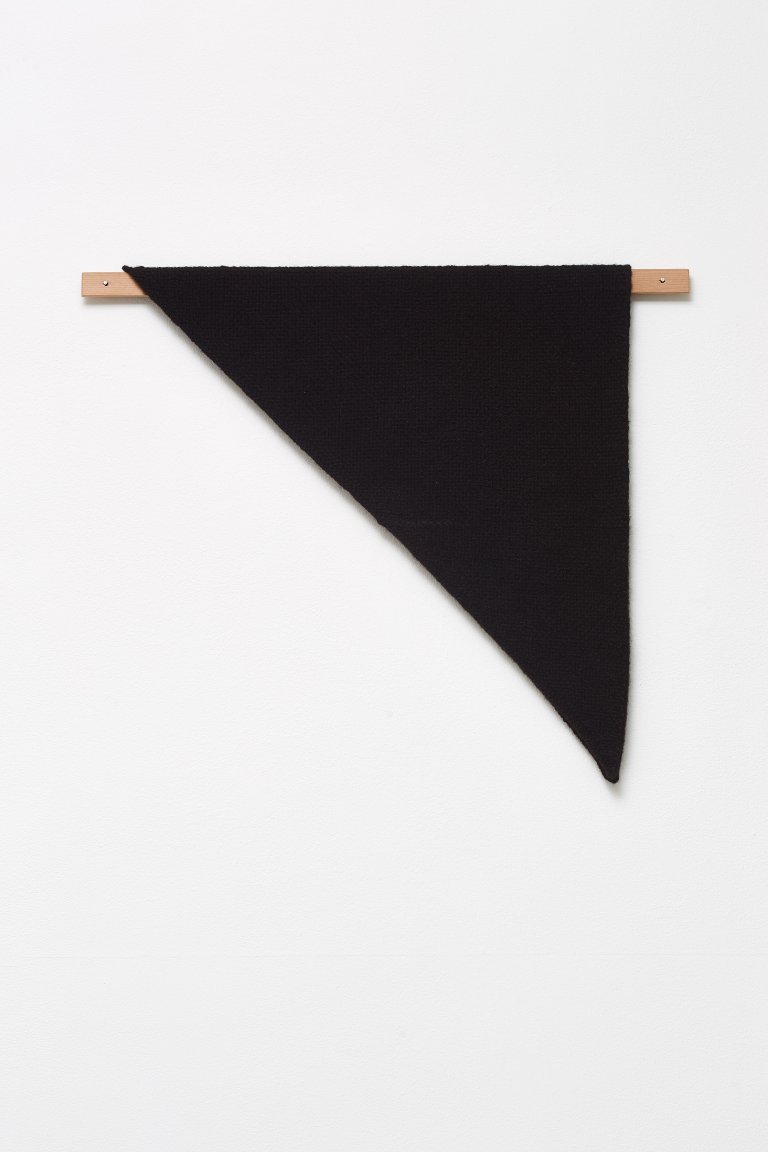
Waulked Triangle, 2015, undyed wool from two black sheep, strand of wool dyed with hydnellum caeruleum, cork, cedar, 74 x 86 cm